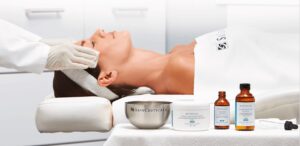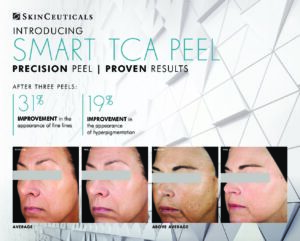Chemical peels come in three categories based on their depth of penetration: superficial, medium, and deep. The choice of peel type and depth is tailored to your skin type, concerns, Fitzpatrick type, and skincare habits.
Superficial peels target the uppermost layer of the epidermis, often used in a series to address fine lines and wrinkles around the eyes and mouth. SkinCeuticals chemical peels, available through select skincare professionals, mainly fall into this category. The SkinCeuticals Micropeel Sensitive, a gentle introduction to chemical peels, is suitable for all skin types, especially sensitive skin, with minimal downtime. For acne-prone skin, the SkinCeuticals Micropeel Plus helps reduce blemishes and prevent future breakouts. The SkinCeuticals Micropeel, known as the red carpet peel, is customizable for those aiming to diminish fine lines, wrinkles, and enhance skin tone and radiance.
Medium-depth peels are more effective for moderate skin damage, including age spots, freckles, and actinic keratoses. They are often combined with laser treatments for maximum effectiveness.
Deep chemical peels, historically using phenol, penetrate down to the reticular layer of the dermis. However, these are less common today due to newer laser technology offering greater control and fewer post-procedure discomforts.

